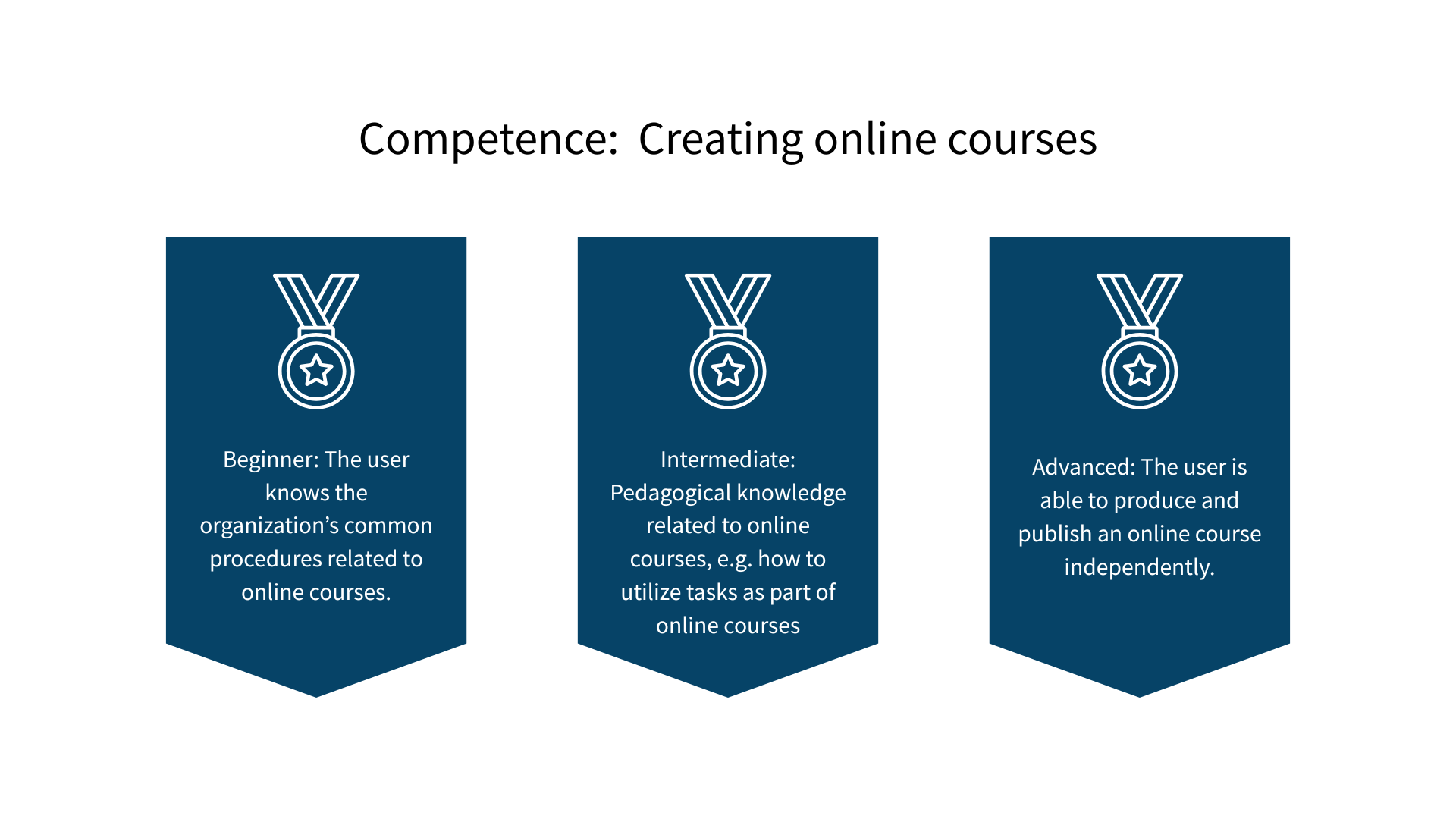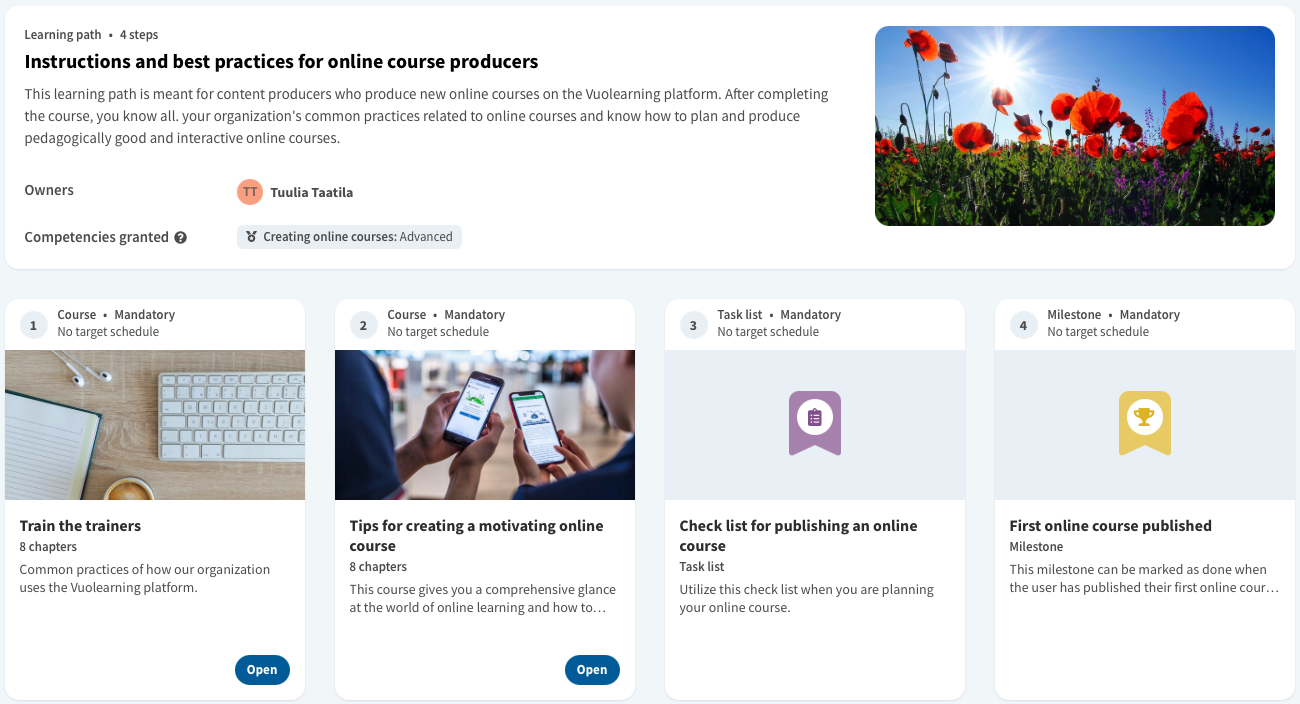Often, content creation for learning platform is, especially in the beginning, very much in the hands of HR or few of the platform's superadmins. However, it is worth expanding and rolling it out to others in the organization as well so that trainings can be produced more quickly and the workload related to the platform does not become too heavy for any individual employee.
This blog post shares tips on how to get employees involved in creating content for the learning platform, and offers examples of guidelines for content creators.
Make the learning platform visible in the organization
First, make sure that all the employees know that the organization has a learning platform and that they understand what its purpose is. Clearly define what the platform is meant to be used for, such as onboarding and maintaining the training register.
Clarify responsibilities and expectations
Show the content creators that they are allowed to use time for creating content. Make roles and responsibilities clear: who creates courses and on what topics; who tracks completions, whether it's course admins or supervisors; who updates the course contents. Clear responsibilities and expectations encourage content creation and support building a learning culture.
Create shared practices for content creation
Create shared practices and guidelines for content creation – from course design and implementation to publishing. This helps to produce higher-quality learning experiences, clarifies the work and responsibilities of content creators and additionally, makes the platform easier to maintain.
Shared practices may include for example:
- specific course templates to be used when creating new courses
- guidelines for course names and images
- a consistent visual style, such as how to use brand colors or whether there are any stock image libraries available
- processes for testing and updating content.
Shared practices can be documented in a common course and easily shared with all content creators.
Instruct and train content creators
Offer training on content creation: how to produce a good online course, how does the platform work, how to use tasks as part of the learning experience and so on. This makes the work of content creators easier, lowers the threshold for creating courses, and ensures higher course quality. Completing an onboarding course or path for content creators may also serve as a prerequisite for producing courses.
Encourage and reward content creation
Encourage and reward content creators for their work. You can for example grant them competencies related to online course production to motivate the employees and bring visibility into their skills.
Competencies and competence matrix also make it easier to identify the right people for creating trainings: you can search for employees who have both subject matter expertise and online course production skills.

An example of competence related to online course production.
Example of content creator guidelines
Make the shared practices and guidelines available to content creators for example by forming a course or learning path of them.
Below is an example of a learning path for the organization's content creators. The user receives competencies of online course production by completing the path's steps.
The path could include steps such as:
- Train the trainers–course: A course documenting all the organization's practices related to the learning platform and content creation. (From Vuolearning's user manual, you can download a course template of this and transfer it to your own learning environment where you can adapt it to your needs.)
- Content creator's course: Theory about online course production, such as how to structure a chapter, how to use tasks as part of the course, or how to gather feedback about the course. (This course can also be downloaded from Vuolearning's user manual.)
- Checklist for publishing an online course: The task list feature can be used as a to-do list when publishing online courses, ensuring all the necessary steps are completed (for example adding tasks, testing the course, publishing and sharing the course with users).
- Milestone: First online course published.

An example of content creator's learning path.
Conclusion
Delegating content production with the organization requires raising awareness of the learning platform, clarifying roles and responsibilities, creating common practices, and instructing and encouraging the content creators. When these elements are in place, content creation becomes easier, courses get produced faster, and the organization's skills are developed more efficiently.